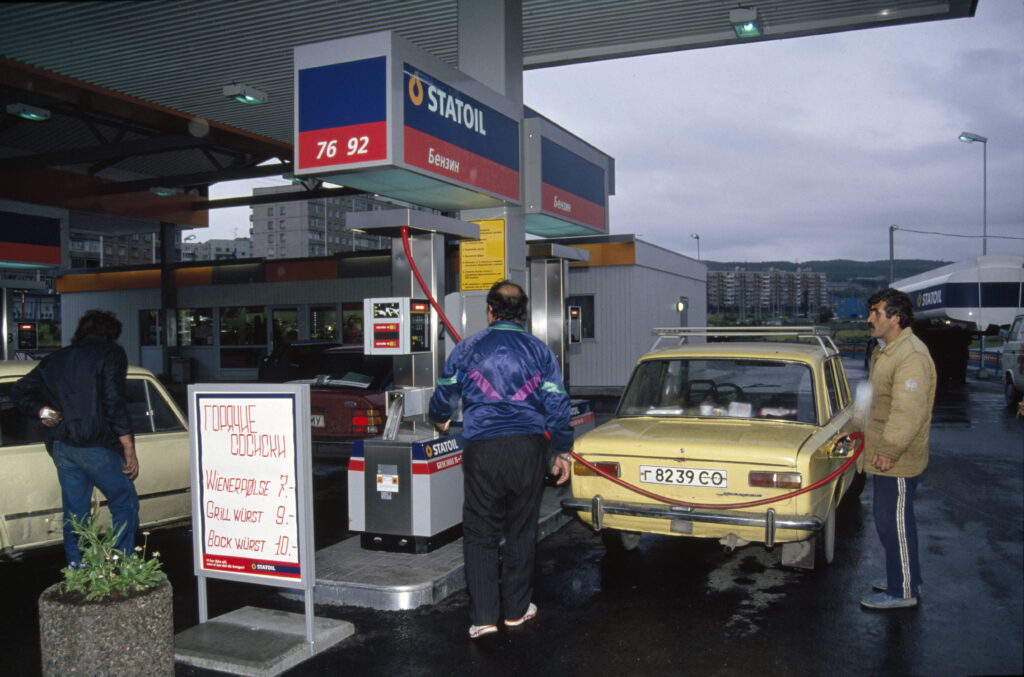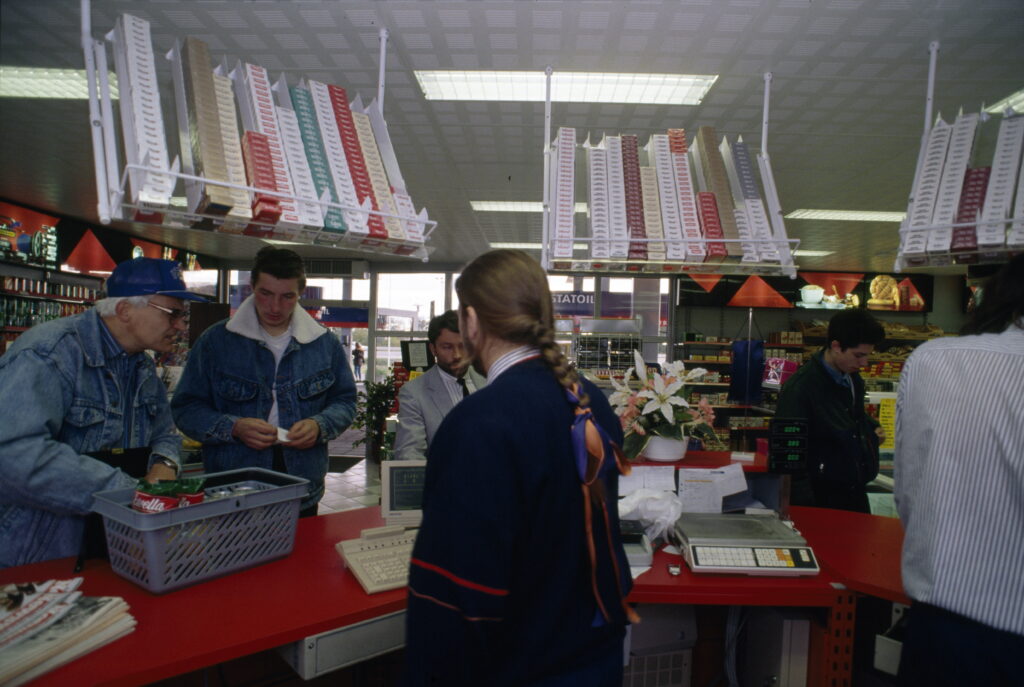Baltic states and Poland – part of the core market

My article on Statoil’s entry to the Swedish and Danish service station markets ended with the subheading: “First we take Scandinavia …”. It would have been natural to continue here with “… then we take the Baltic states and Poland”. Statoil defined Estonia, Latvia, Lithuania and Poland along with Scandinavia as its core market for refined oil product sales.
The company moved into the four Baltic seaboard countries soon after the dissolution of the Soviet Union. It actually opened an Estonian office as early as 1991,[REMOVE]Fotnote: Annual report, 2003, Statoil: 6. and its first service station there the year after. Forecourts in Latvia and Poland followed in in 1993, and in Lithuania during 1994.
To put it a trifle facetiously, Statoil entered the four former Eastern Bloc members with a petrol pump in one hand and a neon sign in the other, bought land and started up service stations.
More formally, subsidiaries were established in each country on the same model used in Scandinavia. These owned all the stations and employed the staff. This was a demanding approach initially in terms of both finance and resources. But Epp Kiviaed, head of Eesti Statoil, said in 2003 that doing it this way rather than through franchise agreements was part of the explanation for the company’s success in the Baltic states.[REMOVE]Fotnote: Ibid: 6.

Growing success
Another reason was that Statoil established a presence in the Baltic states at such an early stage.[REMOVE]Fotnote: Ibid: 6. During 1994, it opened 23 new stations in the region.[REMOVE]Fotnote: Annual report, 1994, Statoil: 32. That was followed by 55 in Germany,[REMOVE]Fotnote: The service stations in Germany were sold in 1997. Poland and the Baltic states.[REMOVE]Fotnote: Annual report, 1995, Statoil: 26. By 1997, Statoil had 65 forecourts operating in Poland and just over 60 in the Baltic states.
The company acquired 79 Polish service stations in 2002 from Sweden’s Preem, raising its total in Poland to more than 200. In the same year, 61 Shell stations were taken over in Estonia, Latvia and Lithuania – raising the number of Statoil forecourts in these three nations to more than 150.[REMOVE]Fotnote: Annual report, 2002, Statoil: 32, and 2003: 31.
By 2003, Statoil was the biggest motor fuel seller in Estonia and Latvia and one of the 10-12 largest companies in the country. It occupied second place in the fight for Lithuanian customers, and made good money from its 156 service stations in the Baltic states.[REMOVE]Fotnote: Annual report, 2003, Statoil: 6.
As the graph shows, the number of stations in these three countries and Poland generally grew at a steady pace. Only Polish sales showed a small dip from 2003 to 2005 – most probably as a result of the Preem acquisition in 2003. Some stations previously owned by the Swedish company presumably lay so close to existing Statoil forecourts that it was natural for one of the two to be shut down. The same happened in Norway when Norol was established.

Extended supply chain and poor terms
Statoil opened an initial service station in Russia during 1993, the same year the company’s first forecourts in Poland and Latvia opened their doors.[REMOVE]Fotnote: Annual report, 1993, Statoil: 53. The number had risen to five by 2001 and to six two years later – all in the Murmansk region.[REMOVE]Fotnote: Annual report, 2001, Statoil: 21, and 2003: 31. This figure rose by 13 in 2003-10 to a final total of 19. Nine were still in the Murmansk area, three in the St Petersburg region and seven around Pskov on the border with Estonia and Latvia.[REMOVE]Fotnote: https://web.archive.org/web/20101214043711/http://www.statoilfuelretail.com/en/Ouroperations/Pages/default.aspx, accessed 20 July 2021.
Njål Gjedrem, Statoil’s Russia manager in the late 1990s, reports that the company became established in the Russian retail market for various reasons. It saw that BP had service stations in Moscow and made good money from these. The main motivation was nevertheless that the parts of Russia where Statoil established itself lay close to the company’s supply chains in northern Norway (Murmansk) and Sweden (western Russia).

He says that local problems explain why Statoil failed to expand in Russia as it had in the Baltic states and Poland. “The authorities at local level had a tendency to be dominated by powerful commercial interests which weren’t keen on competition,” he observes.[REMOVE]Fotnote: Njål Gjedrem in correspondence with Julia Stangeland, April 2022.
A closed chapter
With board blessing, Statoil’s subsidiaries were given room to grow in the Baltic states and Poland.[REMOVE]Fotnote: Minutes, board meeting, Statoil, 2 February 1995. The company secured steadily rising shares of their energy and retail markets. Service station numbers increased both from new foundations and the acquisition of other companies.
All Statoil’s European service stations were concentrated in 2010 in Statoil Fuel & Retail (SFR). Two years later, this was sold to Canada’s Alimentation Couche-Tard and the brand name was changed in 2016 from Statoil to Circle K.
